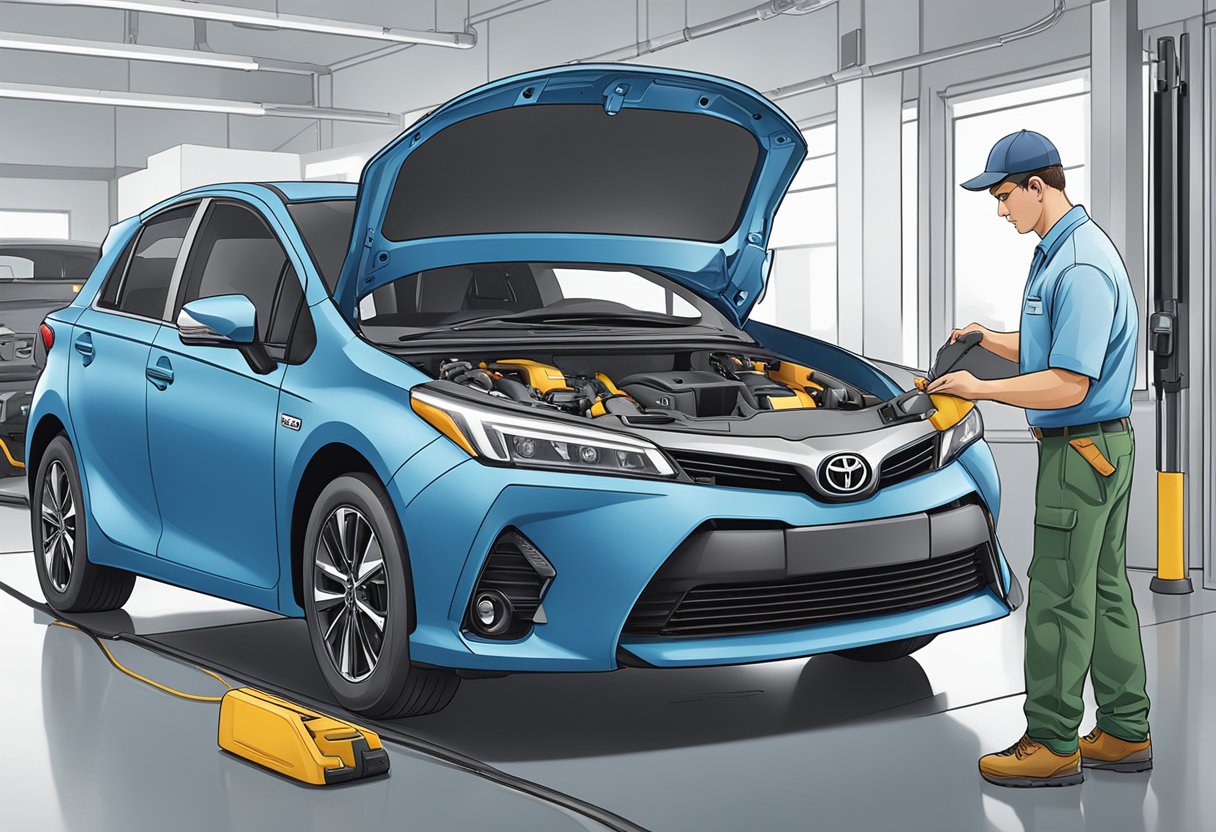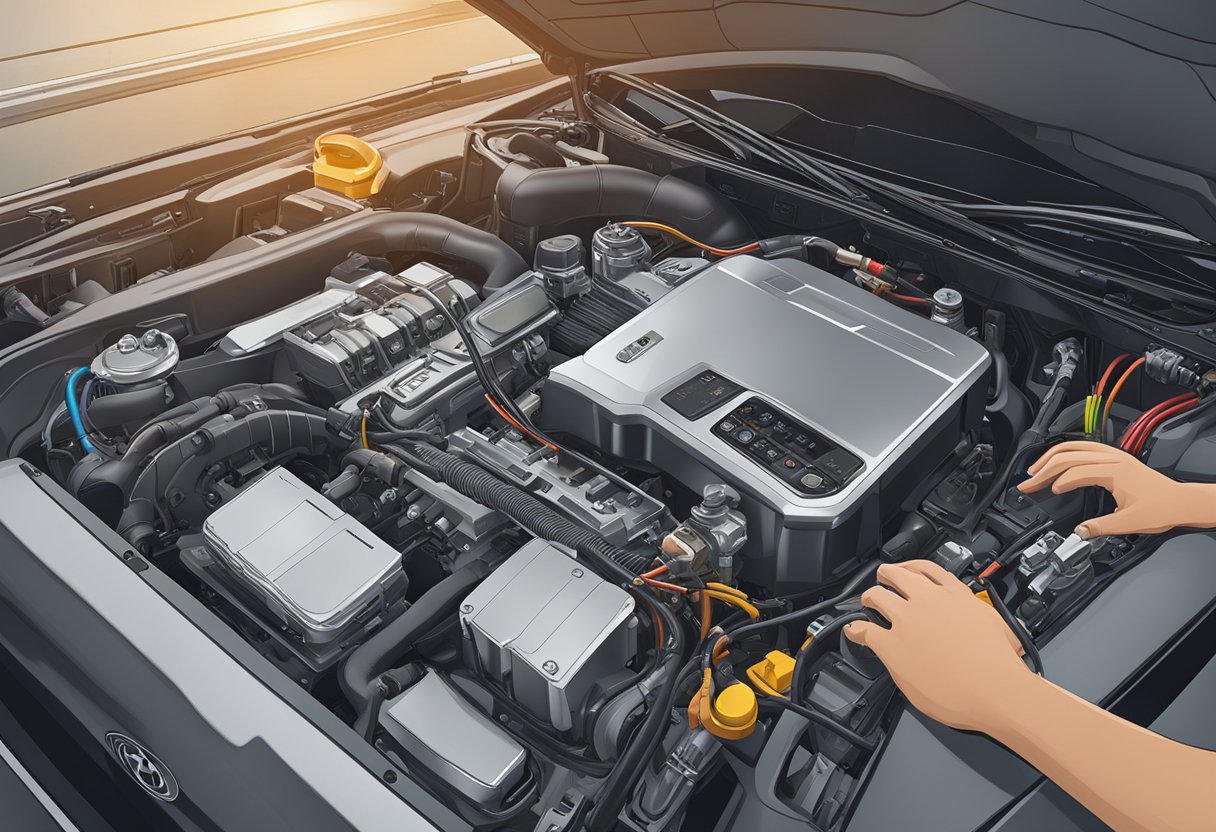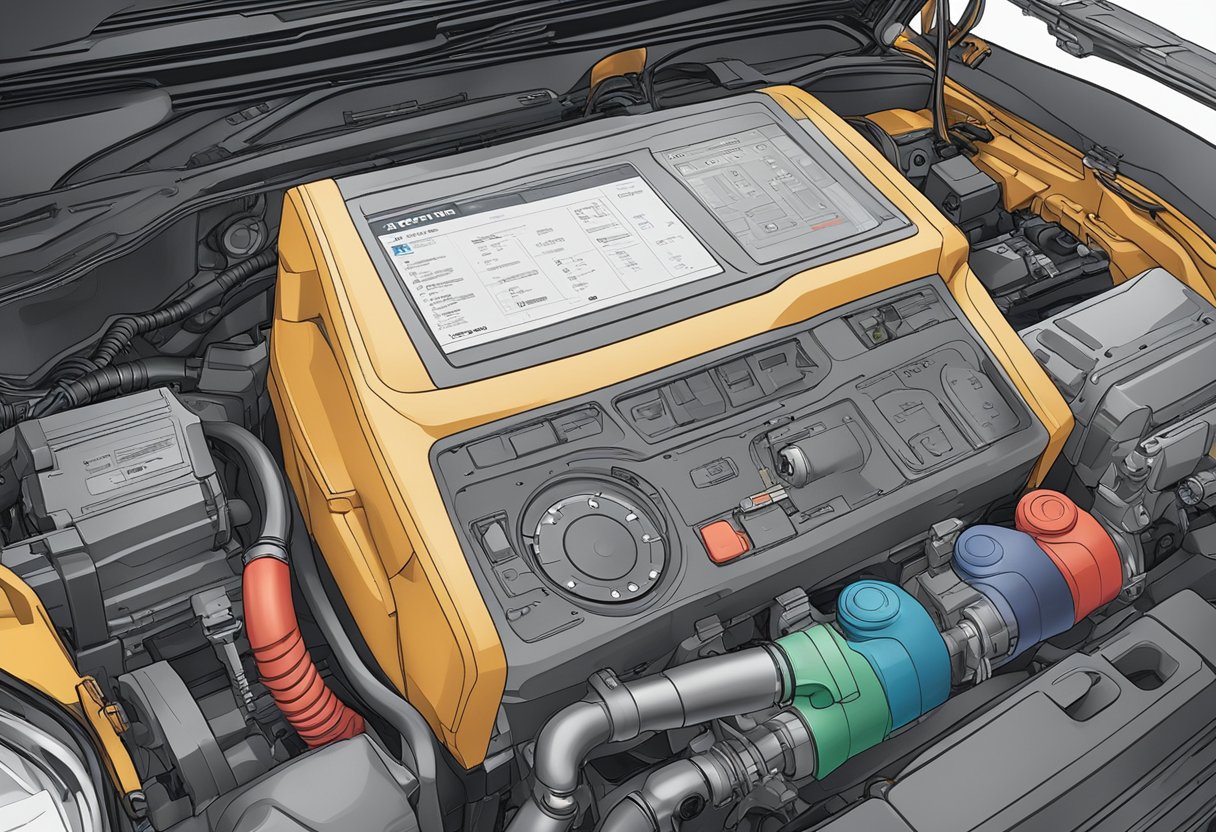If you’re a Toyota owner, you may have come across the P1135 diagnostic trouble code at some point. This code can be frustrating to deal with, especially if you’re not sure what it means or how to fix it. In this article, we’ll take a closer look at the Toyota P1135 code and provide some solutions to help you get your vehicle back on the road.
The P1135 code is a manufacturer-specific code that indicates a problem with the air-fuel ratio sensor 1 heater circuit on bank 1. This sensor is responsible for measuring the air-fuel ratio in the engine and sending that information to the engine control module. If the sensor is not working properly, it can cause a variety of issues, including poor fuel economy, rough idle, and decreased performance.
In the next section, we’ll dive deeper into the specifics of the P1135 code and what causes it. We’ll also provide some solutions to help you diagnose and fix the problem, whether you’re a seasoned mechanic or a novice DIYer. So, if you’re dealing with the P1135 code on your Toyota, keep reading to learn more about this common issue and how to solve it.
Understanding Code P1135
Definition and Significance
If you are experiencing issues with your Toyota vehicle, you may see the code P1135 appear on your OBD-II scanner. This code is a manufacturer-specific code defined by Toyota and stands for “A/F Sensor Heater Circuit (Bank 1, Sensor 1).” It indicates that the engine control module (ECM) detects a problem with the air-fuel ratio sensor 1 heater circuit on bank 1.
The air-fuel ratio sensor, also known as the oxygen sensor, is a critical component in your Toyota’s engine system. It measures the air-fuel ratio in the internal combustion engine and sends that information to the ECM. The ECM then adjusts the air-fuel mixture to optimize the engine’s performance. The heater circuit is responsible for heating the air-fuel ratio sensor to ensure accurate readings.
Components Involved
The P1135 code involves several components in your Toyota’s engine system. These include the air-fuel ratio sensor, the heater element, the ECM, and the wiring harness. The air-fuel ratio sensor is located in the exhaust system and measures the oxygen content in the exhaust gases. The heater element is responsible for heating the sensor to ensure accurate readings. The ECM is the brain of your Toyota’s engine system and receives information from various sensors to optimize engine performance. The wiring harness connects all of these components together.
When the P1135 code appears, it indicates that there is an issue with the air-fuel ratio sensor 1 heater circuit on bank 1. This could be caused by a faulty air-fuel ratio sensor, a faulty heater element, a faulty ECM, or a wiring issue. It is important to diagnose and fix the issue as soon as possible to prevent further damage to your Toyota’s engine system.
Symptoms and Causes
Common Symptoms
When your Toyota’s check engine light comes on, it can be a cause for concern. One of the most common reasons for the check engine light to come on is due to the P1135 code. This code indicates that there is an issue with your vehicle’s air/fuel ratio sensor heater circuit.
There are a few common symptoms that you may experience when your Toyota has a P1135 code. One of the most noticeable symptoms is reduced engine performance. You may notice that your car has a harder time accelerating or that it is not running as smoothly as it used to. On top of that, you may notice increased emissions, which can be harmful to the environment.
Potential Causes
There are a few potential causes of a P1135 code. One of the most common causes is a faulty air/fuel ratio sensor. This sensor is responsible for measuring the amount of oxygen in the exhaust gases and adjusting the fuel injection accordingly. If this sensor is faulty, it can cause the P1135 code to appear.
Another potential cause of a P1135 code is a poor electrical connection. If the connection between the air/fuel ratio sensor and the engine control module (ECM) is poor, it can cause the sensor to malfunction and trigger the P1135 code.
Lastly, a faulty ECM can also cause the P1135 code to appear. If the ECM is not functioning properly, it may not be able to properly communicate with the air/fuel ratio sensor, causing it to malfunction and trigger the P1135 code.
In summary, a P1135 code can be caused by a faulty air/fuel ratio sensor, a poor electrical connection, or a faulty ECM. If you are experiencing reduced engine performance or increased emissions, it is important to have your vehicle diagnosed as soon as possible to prevent further damage.
Diagnostic Process
When you encounter the P1135 code on your Toyota, it is important to follow a diagnostic process to identify the root cause of the issue. This will help you to determine the appropriate solution to fix the problem.
Initial Checks
The first step in the diagnostic process is to perform some initial checks to verify the condition of the engine and its components. This includes checking the engine oil level, operating temperature, and the condition of the air filter.
Next, you should check the wiring and connections of the air/fuel ratio sensor. Make sure that the sensor is properly connected and that there are no broken or damaged wires. It is also important to check the voltage signal and resistance of the sensor to ensure that it is working properly.
Advanced Diagnostics
If the initial checks do not reveal any issues, you will need to perform more advanced diagnostics to identify the root cause of the P1135 code. This may involve using a diagnostic code scanner to read the trouble code and identify any other related codes.
You may also need to perform a more thorough inspection of the engine components and their performance. This can include checking the fuel pressure and flow rate, as well as the engine timing and ignition system.
Overall, the diagnostic process for the P1135 code can be complex and may require the expertise of a professional mechanic. However, by following these initial checks and advanced diagnostics, you can identify the root cause of the issue and take the appropriate steps to fix the problem.
What Could Cause the Toyota P1135 Code and How Can It Be Fixed?
If your Toyota is displaying the P1135 code, it could be due to a fault in the air-fuel ratio sensor. To fix this issue, you may need to replace the sensor with a new one. Sometimes a faulty sensor can trigger the P1135 code, so proper decoding p0234 overboost condition is necessary for accurate diagnosis.
Repair and Troubleshooting
If you have encountered the P1135 code on your Toyota, it’s essential to diagnose and fix the problem as soon as possible. Here are some ways you can repair and troubleshoot the code:
Repairing Faulty Components
The P1135 code is often caused by a faulty air/fuel ratio sensor in bank 1, sensor 1. If this is the case, you will need to replace the sensor. However, before replacing the sensor, it’s important to check the air/fuel sensor harness for bank 1, sensor 1 to ensure that it isn’t shorted or improperly connected. If the harness is damaged, you’ll need to repair or replace it.
Another possible cause of the P1135 code is a poor electrical connection in the air/fuel sensor for bank 1, sensor 1. In this case, you’ll need to check the electrical connections and repair or replace any damaged wires or connectors.
Ensuring Proper Function
After repairing any faulty components, it’s essential to ensure that the air/fuel sensor heater circuit is responding properly. This can be done by checking the factory specifications for your Toyota and testing the sensor with a multimeter.
If the sensor is responding properly, you can clear the trouble code and test drive your Toyota to ensure that the P1135 code doesn’t reappear. If the code does reappear, you may need to perform further troubleshooting to identify the root cause of the problem.
Prevention and Maintenance
Preventing P1135 code from appearing is possible through proper maintenance of your vehicle. Regularly servicing your car and replacing worn-out parts can help prevent the code from appearing. Below are some tips to help you prevent the P1135 code from appearing:
- Check your engine coolant temperature regularly. A faulty coolant temperature sensor can cause the code to appear. Ensure that the sensor is working properly and replace it if it’s not.
- Monitor your engine load. High engine load can cause the code to appear. Avoid overloading your car and keep the load within the recommended range.
- Keep an eye on your fuel efficiency. Poor fuel efficiency can cause the code to appear. Regularly servicing your vehicle and replacing worn-out parts can help improve fuel efficiency.
- Check your emissions regularly. High emissions can cause the code to appear. Ensure that your car’s emissions are within the recommended range.
- Ensure that your catalytic converter is working properly. A faulty catalytic converter can cause the code to appear. Regularly servicing your car and replacing worn-out parts can help prevent this.
- Monitor your exhaust stream. A clogged exhaust stream can cause the code to appear. Regularly servicing your car and replacing worn-out parts can help prevent this.
By following these tips, you can prevent the P1135 code from appearing and ensure that your car runs smoothly. Regular maintenance and servicing of your vehicle can help prevent other codes from appearing and extend the life of your car.
As an Amazon Associate we earn from qualifying purchases.















